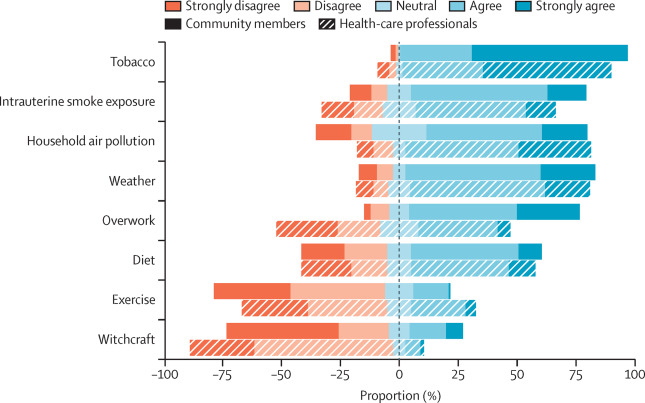This paper cautions that the adoption of electric vehicles with the aim of reducing greenhouse gas emissions must balance that beneficial effect against increased water consumption. It recommends battery electric vehicles charged by solar energy as the best solution.
This Article supports SDG 3 by examining the cost-effectiveness of implementing at scale a set of evidence-based hearing care interventions recommended by WHO. The study finds that the implementation would offer a large return of investment, due to the substantial costs to countries posed by hearing impairment.
This Comment supports SDGs 3 and 10 by explaining how people with disabilities are more likely to suffer adverse health effects from climate change, for a variety of reasons, and emphasising that people with disabilities should be considered, and included in planning of, climate change mitigation and adaptation efforts.
By analyzing the impact of both public water supply and water handling containers, this paper makes an important contribution to the literature regarding the effectiveness of water supply programs based on the following related outcomes: objective and subjective water quality at the source and Point-of-use (POU), POU water treatment, water transport and storage behavior, and uptake of new, improved water points.
Both subterranean rivers and groundwater sources can offer considerable contributions towards potential summer cooling of London Underground stations, while also having significant environmental and economic advantages relative to alternative refrigeration techniques.
This Personal View supports SDGs 3 and 6 by suggesting a scale-specific approach in which agricultural water use is embedded in a larger systems approach to allow the design of effective incentives to change and optimise agricultural water use.
This paper studied the heavy metal concentrations in the study area had a temporal decreasing trend compared to previous studies, which may be due to the reduction in human activities.
The COVID-19 pandemic has devastated communities throughout the world. However, the negative impacts of another pandemic, affecting cities worldwide, arguably rival those of COVID. This destructive global health problem, which we have largely ignored, has been described as the “hurry virus” – the culture of speed that dominates modern lives and cities, causing us to constantly strive to ‘go faster’. This hurry virus has comprehensively infected our city transport systems from the early 20th century.
Background: Combustion-related nitrogen dioxide (NO2) air pollution is associated with paediatric asthma incidence. We aimed to estimate global surface NO2 concentrations consistent with the Global Burden of Disease study for 1990–2019 at a 1 km resolution, and the concentrations and attributable paediatric asthma incidence trends in 13 189 cities from 2000 to 2019.
Background: Effectiveness of health programmes can be undermined when the implementation misaligns with local beliefs and behaviours. To design context-driven implementation strategies, we explored beliefs and behaviours regarding chronic respiratory disease (CRD) in diverse low-resource settings. Methods: This observational mixed-method study was conducted in Africa (Uganda), Asia (Kyrgyzstan and Vietnam) and Europe (rural Greece and a Roma camp). We systematically mapped beliefs and behaviours using the SETTING-tool.

